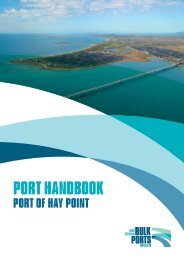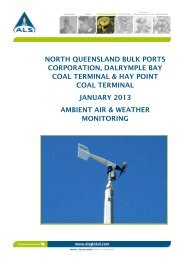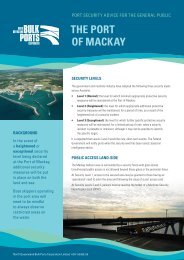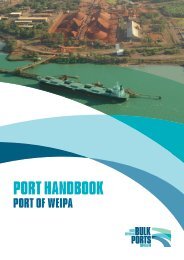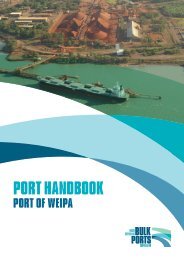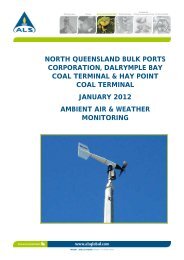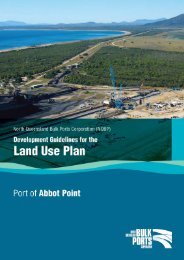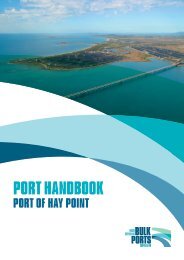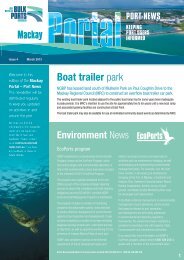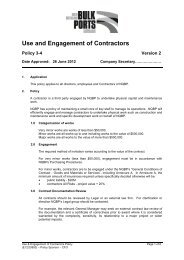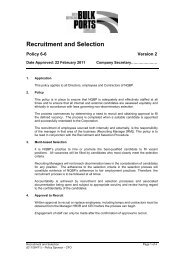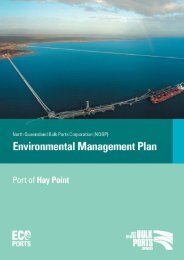Terms of Reference - North Queensland Bulk Ports Corporation
Terms of Reference - North Queensland Bulk Ports Corporation
Terms of Reference - North Queensland Bulk Ports Corporation
- No tags were found...
You also want an ePaper? Increase the reach of your titles
YUMPU automatically turns print PDFs into web optimized ePapers that Google loves.
The analysis should describe both the potential and direct economic impacts includingestimated costs, if material, on industry and the community, assessing the following:• employment• property values• industry output (for example, large construction projects)• impact <strong>of</strong> project construction and operation, including additional marine transport,on commercial boating and fishing• both positive and negative impacts on the tourism industry due to any effects on theGreat Barrier Reef• potential impact on regional availability <strong>of</strong> extractive resources• the indirect impacts likely to flow to other industries and economies from thedevelopment <strong>of</strong> the project. This should also consider the implications <strong>of</strong> the projectfor future development• the distributional effects <strong>of</strong> the proposal including proposals to mitigate any negativeimpact on disadvantaged groups• the likely material fiscal impacts on national, state and local governments arisingfrom the economic and social impacts <strong>of</strong> the project.Strategies for local participationThe assessment <strong>of</strong> economic impacts should outline strategies for local participation,including:• strategies for assessing the cost effectiveness <strong>of</strong> sourcing local inputs from theregional economy during the construction, operation and rehabilitation stages <strong>of</strong> theproject• employment strategies for local residents including members <strong>of</strong> Indigenouscommunities and people with a disability, including a skills assessment andrecruitment and training programs to be <strong>of</strong>fered• strategies responding to relevant government policy, relating to:– the level <strong>of</strong> training provided for construction contracts on <strong>Queensland</strong>Government building and construction contracts, with regard to the <strong>Queensland</strong>Government Building and Construction Contracts Structured Training Policy (the10 per cent policy) (Skills <strong>Queensland</strong> 2008)– to use <strong>of</strong> the Indigenous Employment Policy for <strong>Queensland</strong> GovernmentBuilding and Civil Construction Projects—the 20 per cent policy (Department <strong>of</strong>Employment, Economic Development and Innovation 2008a) as a guide forcreating Indigenous employment opportunities– development <strong>of</strong> a Local Industry Participation Plan in accordance with therequirements <strong>of</strong> the Local Industry Policy (Department <strong>of</strong> Employment, EconomicDevelopment and Innovation 2010) and Local Industry Policy Guidelines(Department <strong>of</strong> Employment, Economic Development and Innovation 2011a), inconjunction with the DSDIP Office <strong>of</strong> Advanced Manufacturing to embrace theuse <strong>of</strong> locally sourced goods and services.- 64 - Contents <strong>of</strong> the EISDudgeon Point Coal Terminals Project<strong>Terms</strong> <strong>of</strong> reference for an environmental impact statement



